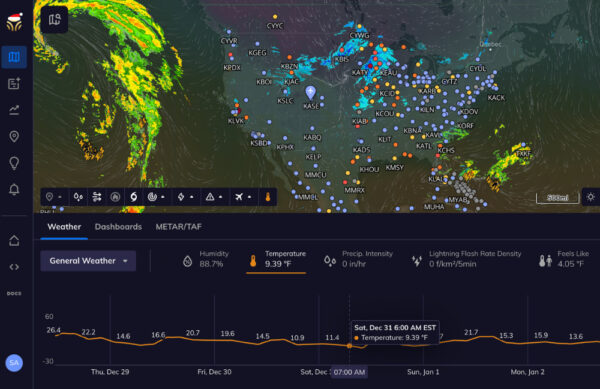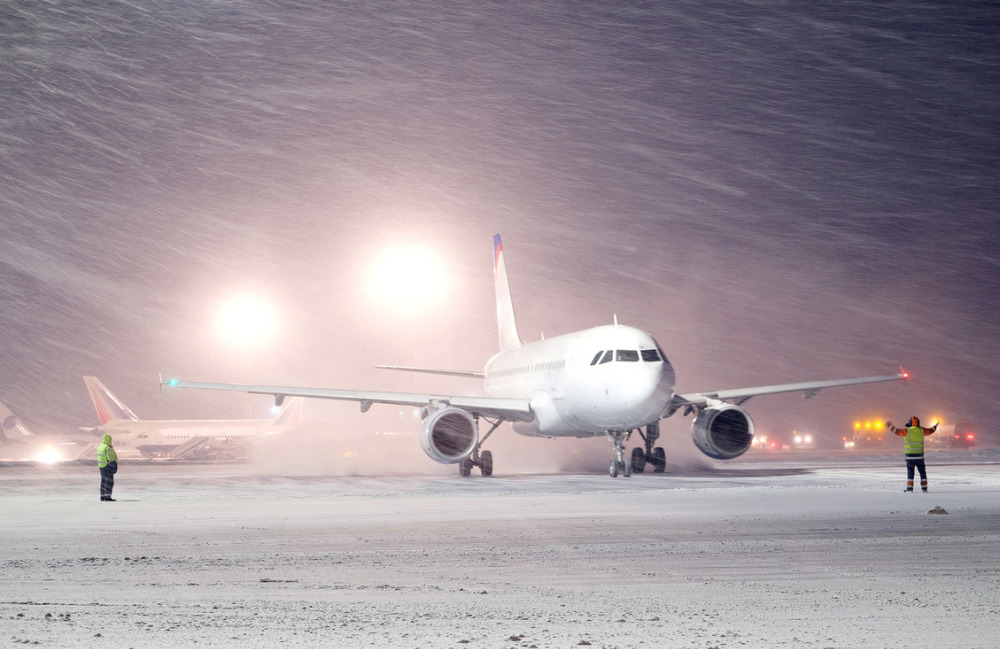Starting today, a historic winter storm is hitting portions of the country, with extreme cold and blizzard conditions expected in the Midwest and Great Lakes region.
What to Expect
The storm is expected to bring heavy snow, wind gusts over 60 mph, and temperatures as low as 50 degrees below average. This storm has the potential to be an exceptionally severe and historic blizzard for many areas, especially across the Midwest and Great Lakes region.

Impact on Air Travel
This year, over 113 million Americans are expected to travel for the holidays, and these conditions are sure to increase delays and cancellations in air travel, specifically.
The aviation industry is particularly vulnerable to winter weather with impacts ranging from safety and efficiency. Airlines in the path of this week’s storm may expect:
- More delays and cancellations from poor visibility
- Unexpected mechanical issues due to extreme cold
- Grounded planes from ice on the runway or strong winds
- Increased costs from deicing planes and runways
To mitigate the impact of extreme winter weather, the aviation industry can invest in deicing equipment and use specialized planes that can operate in challenging conditions. In addition, airlines can work with airport personnel to ensure that runways are clear and safe for take-off and landing.
Impact on Transportation and Supply Chain
This week’s historic storm will also have a serious consequences for the supply chain. With the trucking industry handling an estimated 70% of all freight tonnage in the US during this busy season, the supply chain is especially vulnerable to disruptions from winter conditions.
Like aviation, impacts range from safety to efficiency, and touch all industries:
- Delays in the delivery of goods from poor road conditions for truckers
- Increase risk of accident from high winds for lightweight or oversized cargo
- Slowed operations in warehouses and distribution centers from extreme cold
- Ripple effect on production and sales for other industries experience delays
To prepare for this extreme winter weather, the supply chain can take a number of steps. Trucking companies can invest in winter tires and train drivers on how to navigate slippery roads safely, while also working with their customers to adjust delivery schedules or find alternative routes in the event of disruptions.
Warehouses and distribution centers can also take steps to ensure the safety and efficiency of their operations during extreme winter weather, by investing in heating and insulation, implementing emergency plans, and ensuring that employees have appropriate clothing and equipment.
Adapting at Scale
For airlines and fleets relying on manual processes to monitor and prepare for weather impact, this week’s weather will inevitably put their people/assets at risk and increase costs incurred from these conditions.
Adapting to these impacts at scale requires advanced technology, and that’s where Tomorrow.io’s weather intelligence can help.
Prepare Your Business for Winter Weather Today






